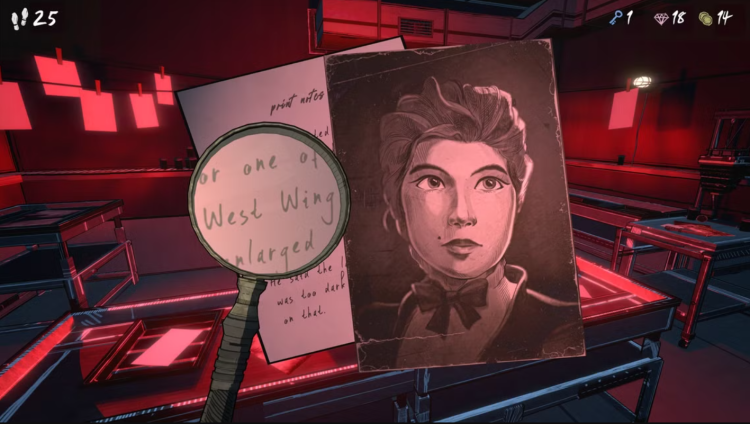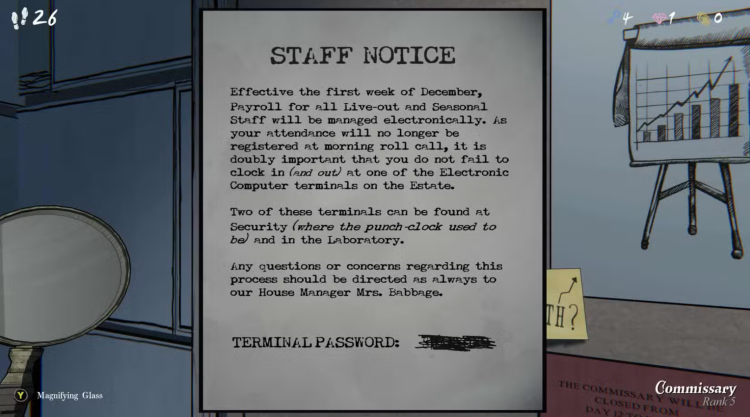Localization Could Decide Game of the Year as Blue Prince Faces Challenges in Global Voting
The Game of the Year conversation for 2025 has become increasingly competitive, with several heavy hitters entering the race late in the year. As nominees like Hollow Knight: Silksong, Hades 2, Ghost of Yōtei, and Silent Hill f gain momentum ahead of The Game Awards, smaller contenders such as Blue Prince may struggle to stay visible.
Blue Prince, a first-person puzzle adventure from Dogubomb and publisher Raw Fury, earned strong critical praise for its intricate mystery and creative structure. Players explore an ever-changing manor while searching for a hidden room, uncovering layers of word-based puzzles that reward linguistic intuition. However, what makes Blue Prince unique also makes it difficult to evaluate on a global stage. Its core puzzles rely entirely on English wordplay and semantics, making localization into other languages nearly impossible without fundamentally redesigning the experience.
That creative decision has resulted in a game that is, by necessity, only available in English. While that might not seem like a major issue for most Western players, it dramatically limits its reach among the international critics who make up The Game Awards’ voting panel. The show’s jury includes more than 100 outlets from across the world, representing regions like China, Brazil, and Mexico. Although this structure ensures a broad perspective, it also presents a unique disadvantage for smaller games that can’t afford full localization.

As Giovanni Colantonio notes, this isn’t a reflection of Blue Prince’s quality but a structural limitation of how The Game Awards functions. Games with extensive localization budgets have a clear advantage. AAA publishers often release simultaneous multi-language versions to ensure accessibility and visibility among critics worldwide. For independent developers, the costs and resources required to achieve that level of accessibility can be unrealistic, especially for projects built around language-specific mechanics.
The situation highlights a growing divide between blockbuster productions and small-scale creative works. A game like Blue Prince, which depends heavily on text and wordplay, simply cannot compete on equal footing with a globally distributed, fully localized title from a major publisher. While localization is an essential part of global accessibility, its role in award voting underscores how infrastructure and funding shape critical outcomes.
Blue Prince’s challenges go beyond translation. Accessibility remains an ongoing issue for the game, with players noting colorblindness barriers that the studio has promised to address in a future patch. These technical and design obstacles compound the problem for awards recognition, where visibility and accessibility often go hand in hand.
The issue reflects a broader imbalance in how The Game Awards is structured. Its categories largely favor blockbuster genres—action, adventure, and shooter titles—while smaller, text-driven experiences have less presence. The show’s global voting pool and marketing-driven nomination process lean toward games that dominate popular conversation rather than those that push niche innovation.
There’s an argument that such outcomes are unavoidable. A global award show requires inclusivity across languages, and if a game cannot be experienced by a significant percentage of the jury, it’s unlikely to earn widespread recognition. At the same time, this reality illustrates the limitations of current award systems in representing the diversity of modern game design. Independent creators often prioritize creativity over scale, but that approach leaves them vulnerable when the voting process rewards reach and familiarity.

Even with these limitations, Blue Prince may still find its recognition elsewhere. The game remains a strong candidate for categories like Best Debut Indie, which are less dependent on global consensus and often spotlight projects that resonate within smaller communities. Such recognition would align it with other acclaimed but niche titles that have found success outside the main Game of the Year spotlight.
The Game Awards has always reflected the tension between art and industry, and Blue Prince’s case serves as a clear example. It’s a reminder that excellence alone doesn’t guarantee recognition when the structure of the system favors scale, accessibility, and translation. As the industry continues to globalize, the influence of localization on recognition will only deepen, shaping not just how games are played, but how they’re celebrated.
Blue Prince may not capture the top prize, but its design philosophy—ambitious, language-dependent, and unapologetically niche—cements its place as one of 2025’s most distinct releases. Whether or not it stands among the final nominees, its struggle underscores how the Game of the Year race has become as much about visibility and translation as it is about creativity and vision.

Comments